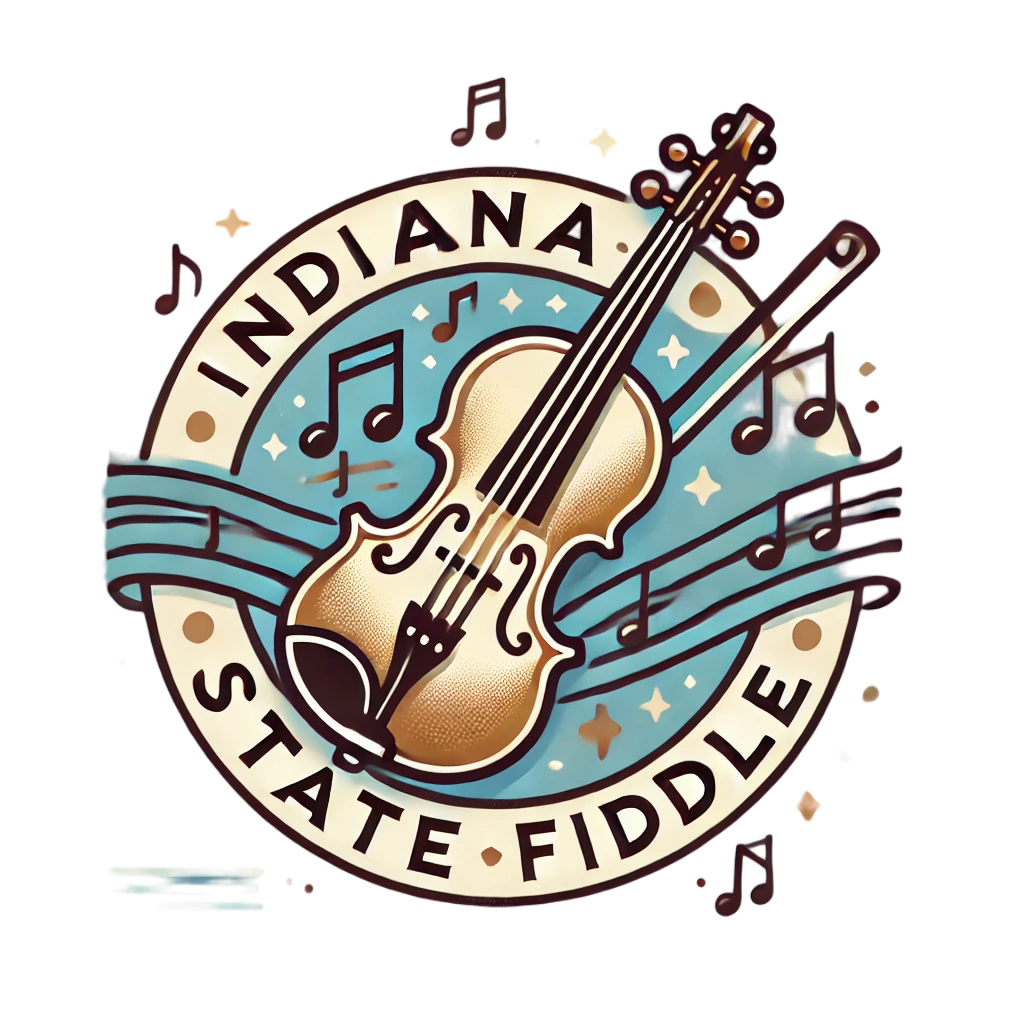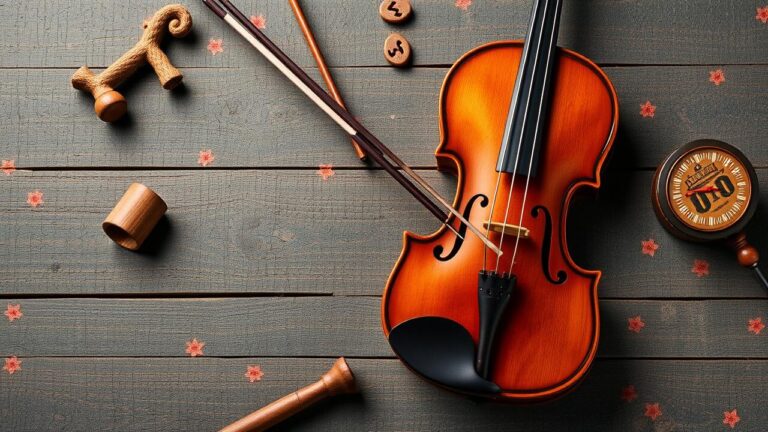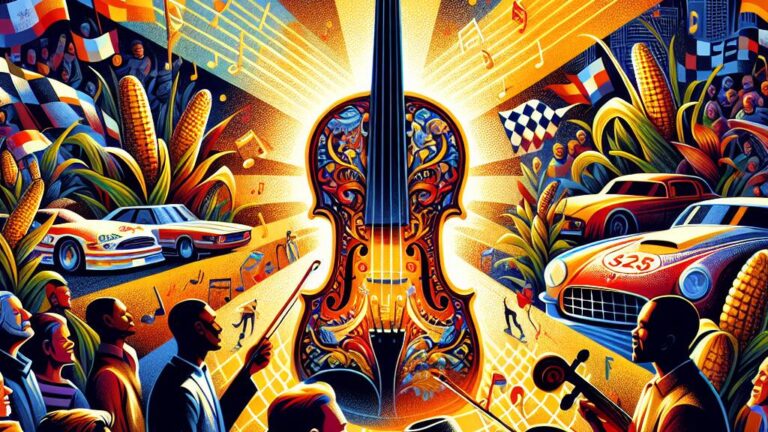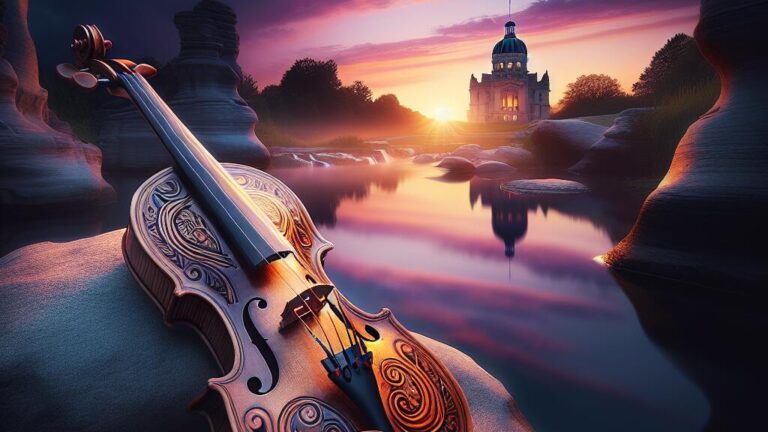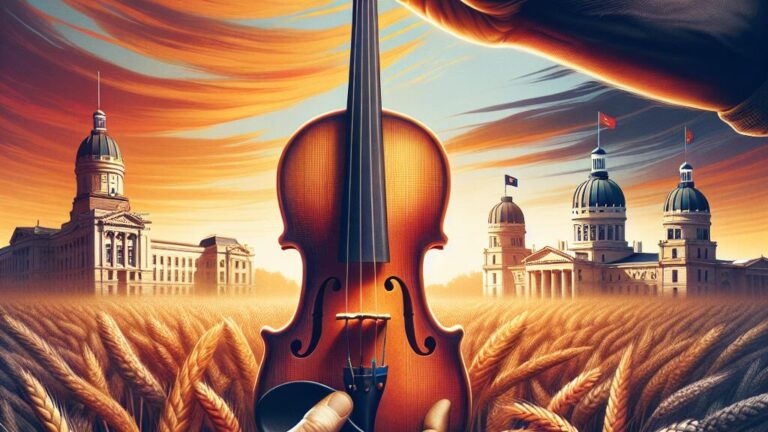History of the Indiana State Fiddle
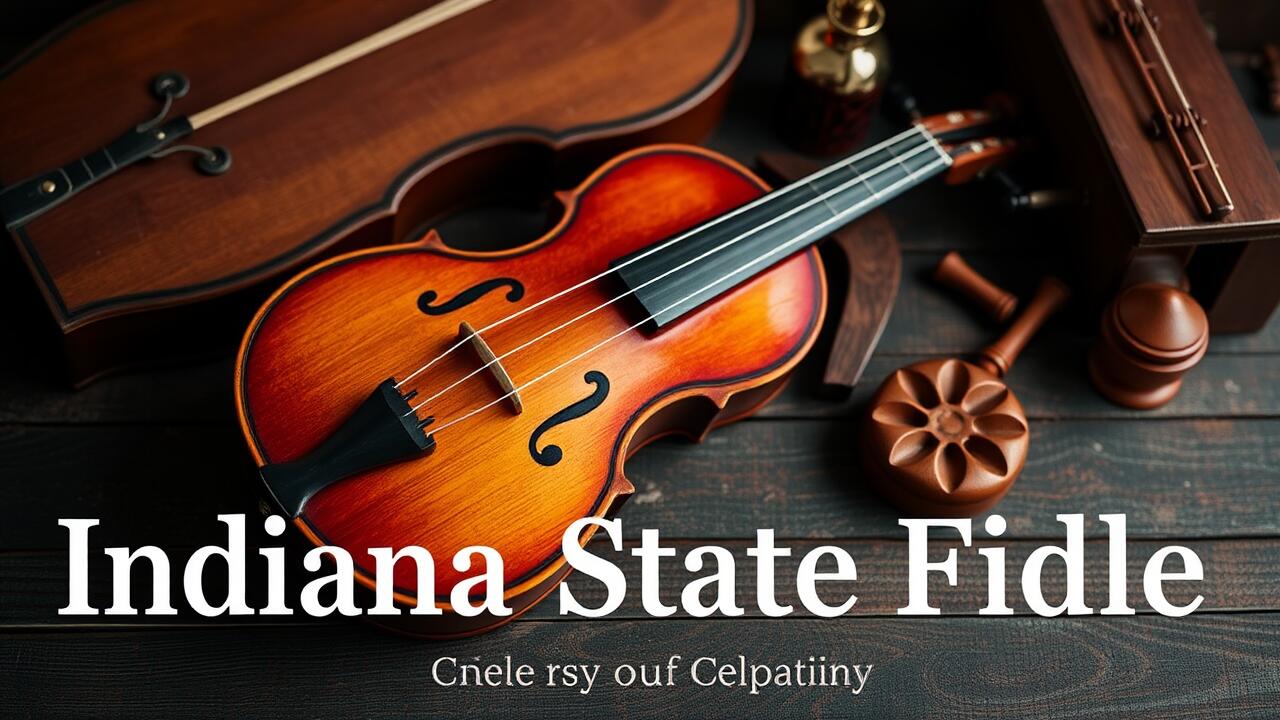
Table Of Contents
Exploring the History of the Indiana State Fiddle
History Of The Indiana State Fiddle | Origins of the Indiana State Fiddle
The history of the Indiana State Fiddle traces its roots to a blend of cultural influences that shaped the fiddle music landscape across the state of Indiana. Early settlers brought their musical traditions from various regions, particularly in southern and central Indiana, where old-time fiddle music began to flourish. The Indiana Historical Bureau documents these evolving traditions, highlighting the significance of local communities in areas such as northeastern Indiana and at institutions like Indiana State University and Indiana University. Over time, the Indiana state fiddle has become not only a reflection of its diverse heritage but also a symbol of the vibrant folk music culture that continues to thrive throughout the state.
History of the Indiana State Fiddle | Early Cultural Influences
The History of the Indiana State Fiddle is deeply intertwined with the diverse cultural influences that shaped the region. Northern Indiana’s rich musical heritage can be traced back to the mingling of various communities, including Scottish, Irish, and German immigrants who brought their own fiddling traditions. These influences are particularly evident in the performances of old-time fiddlers, who have kept the spirit of their ancestors alive by playing traditional tunes at community gatherings. The Indiana State Museum showcases these historical connections through exhibits that highlight the importance of fiddles and fiddle players in local culture.
Fiddle players from areas such as Newburgh and northwest Indiana have contributed significantly to the evolution of Indiana’s fiddling styles. The Indiana State Capitol has often served as a focal point for celebrating this vibrant music scene, attracting both amateur and professional fiddlers. Through local competitions and festivals, these talented fiddlers have fostered a sense of community while preserving the state’s musical legacy. The interplay between various regional styles continues to influence contemporary performances, ensuring that the History of the Indiana State Fiddle remains a vibrant tapestry of cultural expression.
Development of Fiddling Traditions
The history of the Indiana State Fiddle is deeply intertwined with the rich cultural tapestry of the Hoosier State. Early fiddle traditions were influenced by settlers from Tennessee and other regions, blending various musical styles into the local sound. As fiddlers emerged throughout Indiana, they often participated in events at the Indiana State Fair, showcasing their unique interpretations and fostering a sense of community. Institutions like the Indiana State Normal School and Indiana State Teachers College played pivotal roles in preserving and promoting these traditions, encouraging generations of musicians to embrace their heritage.
As fiddling traditions developed in Indiana, they also began to reflect the local characteristics of regions like Orange County. Fiddlers not only entertained audiences but also served as cultural ambassadors, sharing stories and experiences through their music. The convergence of different influences led to the creation of a thriving fiddling scene, one that resonated with the history of the Indiana State Fiddle. This melding of traditional and contemporary styles ensured that the fiddle remained a vibrant part of Indiana’s musical landscape, continuing to evolve with each new generation of players.
Key Historical Milestones
The history of the Indiana State Fiddle is marked by significant milestones that reflect broader musical trends and cultural exchanges. Early influences from nearby states such as Ohio, Louisiana, and Pennsylvania contributed to the development of unique fiddling styles. The integration of instruments like the accordion and brass into community music scenes showcased the evolving nature of traditional music. Institutions such as the University of Oklahoma played a crucial role in archiving traditional music, preserving the rich history of these fiddling traditions. These milestones not only highlight the sociocultural fabric of Indiana but also underscore the importance of the fiddle as a musical instrument that has shaped local identities.
The Establishment of Fiddle Competitions
Fiddle competitions emerged as a significant aspect of the History of the Indiana State Fiddle, reflecting the diverse musical influences within the region. Early gatherings in cities like Mount Vernon and Indianapolis showcased local talents. Participants often drew inspiration from a blend of traditions, including Native American music and styles from neighboring states like Oklahoma and Virginia. The enthusiasm of communities for these events helped to solidify fiddling as a cherished art form.
As the popularity of fiddle competitions grew, newspapers such as The Indianapolis Star began to highlight these events, further encouraging participation. Competitors came from various backgrounds, including regions like Toledo, OH, and Western Pennsylvania, bringing unique styles and techniques to the stage. Trombones occasionally accompanied the fiddle performances, enriching the overall experience. This vibrant atmosphere marked a turning point in the History of the Indiana State Fiddle, connecting musicians and audiences across the state.
Important Figures in Indiana Fiddling
The rich tapestry of the History of the Indiana State Fiddle is woven with the contributions of numerous influential figures. Early settlers, particularly those from southern states and even as far as South Dakota, played a crucial role in bringing old time music traditions to Indiana. These musicians laid the foundation for indiana fiddlers to flourish, using their craft to blend cultural influences that would shape the state’s unique fiddling style. Indiana history books often highlight the pioneering efforts of these fiddlers, recognizing their vital influence on the growth of local music scenes.
Among the notable Indiana fiddlers is the legendary Indianapolis fiddler known for his lively performances at regional gatherings. His ability to captivate audiences helped solidify fiddling as a cherished component of Indiana’s musical heritage. Celebrated figures from the past have significantly impacted modern fiddling practices, creating a bridge between the old and the new. As the History of the Indiana State Fiddle continues to evolve, the legacies of these important musicians remain a testament to the enduring spirit of Indiana’s musical community.
| Fiddler Name | Location | Contribution | Notable Performance |
|---|---|---|---|
| John “Red” Johnson | Indianapolis | Pioneered old-time music traditions in Indiana | Annual State Fiddle Contest |
| Mary “Maggie” McCoy | Bloomington | Influenced local crafts and fiddling techniques | Folk Festivals across Indiana |
| Charlie Smith | Fort Wayne | Enhanced the blend of cultural influences in fiddling | Regional charity events |
| Betty Lou Thompson | Evansville | Fostered community fiddling groups | Inspirational performances at local schools |
The Evolution of Fiddle Styles
The History of the Indiana State Fiddle is marked by a rich tapestry of influences that shaped its development across various Indiana regions. Early Indiana saw the integration of diverse musical traditions, with Indiana natives contributing to a sound that reflected both local culture and broader folk influences. Indiana recordings from the 20th century captured the evolving styles, becoming crucial to the preservation of the fiddle legacy. Central Indiana emerged as a vibrant hub for this art form, with community events fostering an indiana passion for fiddling that has endured through generations. This evolution highlights the significance of traditional arts Indiana in maintaining a connection to the past while embracing new interpretations that resonate with contemporary audiences.
Regional Variations in Fiddling
The History of the Indiana State Fiddle showcases a rich tapestry woven through various regional influences. Each area within the state contributes distinct elements to the fiddle tradition, which can be traced back to the first fiddle players who settled in Indiana. The Indiana regionality map highlights how different styles emerge from local contexts. In rural communities, old-time fiddlers often adapt traditional Indiana folk songs, infusing them with unique regional flavors, while fiddle contests celebrate these differences, fostering a sense of local pride among record fiddlers.
Certain regions have become known for their particular fiddling styles, often highlighted during events like Indiana Day or the annual fiddle championship. These competitions not only showcase the talent of local fiddle players but also reflect the diverse influences that shape Indiana’s musical landscape. Each performance reveals varying interpretations of classic tunes, reinforcing the importance of regional variations. This evolution of style contributes to the vibrant legacy of the fiddle tradition in Indiana.
Impact of Folk Music Trends
The evolution of fiddle music in Indiana has been significantly influenced by broader folk music trends. As bluegrass emerged in the mid-20th century, many notable fiddlers from the region began incorporating its elements into their playing. This shift is reflected in the extensive Indiana collections that highlight the diverse styles developed in the central Indiana plains. The fusion of traditional fiddle techniques with contemporary sounds has contributed to the rich tapestry of Indiana’s musical heritage, making the Indiana University site a valuable resource for those studying its history.
Fiddle contests have played a pivotal role in shaping the fiddle music scene across the state. These events not only celebrate individual talent but also foster community engagement among Hoosiers. Indiana State teachers have often encouraged students to participate, blending educational initiatives with cultural experiences. The popularity of fiddle contests further solidifies Indiana’s status as a vibrant hub for fiddling, showcasing the state’s commitment to preserving the history of the Indiana State Fiddle while embracing modern influences.
- The fusion of bluegrass with traditional fiddle music has created new genres and styles in Indiana.
- Fiddle contests bring together musicians of all ages, promoting intergenerational learning and collaboration.
- Educational programs in schools emphasize the importance of folk music in cultural heritage.
- The presence of local bands often revitalizes interest in traditional fiddle techniques.
- The connections forged at fiddle contests contribute to a strong sense of community and regional pride.
- Indiana’s folk music trends encourage the exploration of new musical ideas within a traditional framework.
- The continuous evolution of fiddle music reflects the changing cultural landscape of the state.
Indiana State Fiddle in the 20th Century
The history of the Indiana State Fiddle took on vibrant dimensions in the 20th century, especially with the emergence of community events that celebrated fiddle music across southern Indiana and the upland regions. Fiddle tunes played an essential role in local gatherings, weaving a rich tapestry of music history that connected generations. This era saw the proliferation of fiddle songs, which were often rooted in traditional styles yet influenced by modern trends. Websites like indianafiddlersgathering.com began to showcase these rich traditions, emphasizing the importance of preserving the cultural legacy and promoting new talent. Density Indiana maps revealed areas rich in fiddling culture, illustrating the community’s deep connection to the art form. The fiddle music exists not only as a pastime but as a cherished state tradition that continues to resonate with audiences today.
The Role of Fiddle Music in Community Events
Fiddle music has played an integral role in community events across Indiana, celebrating the long history of the Indiana State Fiddle. The vibrant sounds emerging from pioneer instruments have created an atmosphere of joy and connection at local fairs and festivals. Indiana collections statistics show a remarkable participation rate in these events, showcasing the talent of fair fiddlers and the enthusiasm of attendees. Indianapolis musicians often perform at these gatherings, bringing fiddle news to life and engaging audiences with energetic performances that reflect the state today.
These community events serve as a nurturing ground for aspiring musicians, with many finding fiddle teachers who can guide them in mastering the craft. Several fiddle sites have emerged as hubs for networking and collaboration among players, drawing attention to the depth of talent within the state. As history live unfolds at these gatherings, the influence of the Indiana State Fiddle continues to inspire new generations and keep the tradition alive.
- Fiddle music fosters a sense of belonging within the community.
- It encourages intergenerational connections among musicians and attendees.
- Community events featuring fiddle music often include dance competitions.
- Local fiddlers are given opportunities to showcase their skills and gain experience.
- These gatherings promote cultural heritage and preserve historical music traditions.
- Fiddle music attracts tourists, boosting the local economy during events.
- Collaborative performances often lead to the creation of new musical compositions.
Notable Festivals Celebrating Fiddling
Festivals celebrating fiddling in Indiana reflect the storied history of the Indiana State Fiddle. These events often feature fiddle contest winners showcasing their talents alongside local Bloomington musicians. Attendees can explore the rich tapestry of tunes rooted in the early history of fiddling, celebrating original music that has shaped the region. The density of Indiana collections, including instruments from various musical instrument businesses, contributes to the vibrant atmosphere of these festivals, allowing visitors to engage with the state’s cultural heritage.
The significance of these festivals extends beyond mere entertainment; they serve as important gatherings for communities across the state. Each year, fiddlers from various states come together to celebrate their craft, sharing techniques and styles that have evolved over time. These events help preserve the History of the Indiana State Fiddle while also fostering a sense of camaraderie among musicians. The lively performances and workshops encourage both seasoned players and newcomers to explore the diverse influences that have shaped the fiddle scene in Indiana.
Contemporary Fiddle Scene in Indiana
The vibrant contemporary fiddling scene in Indiana is deeply rooted in the rich history of the Indiana State Fiddle, reflecting the diverse immigrant history that has shaped its evolution. Early Hoosiers played a pivotal role in laying the foundations of fiddling traditions, drawing from pioneer music that integrated various influences. This historical context, enriched by the instrument-making heritage passed down through generations, showcases the dynamic nature of fiddling in Indiana. Organizations such as the historical society continue to honor the legacy of influential figures like Houck, whose contributions resonate in the performances of modern fiddlers today. The past informs the present, ensuring that the lively spirit of Indiana’s fiddling remains alive and relevant in contemporary music.
Preservation of Traditional Techniques
The history of the Indiana State Fiddle is deeply intertwined with the traditional techniques brought to the region by German settlers. These early pioneers played a crucial role in shaping fiddling styles through their unique approach to band instruments. They influenced local musicians, such as Connor McCracken, who would later document these techniques in his papers. These historical practices not only preserved the essence of fiddling but also contributed to a distinctive Hoosier sound that resonates through generations.
Efforts to maintain these traditional techniques have become an essential part of Indiana’s musical heritage. Many musicians today actively engage in playing styles that honor the roots established by earlier fiddlers. Festivals and workshops often feature sessions focused on historical methods, allowing participants to learn directly from skilled players. By emphasizing the rich history of the Indiana State Fiddle, these initiatives ensure that the legacy of fiddling continues to thrive amid an ever-evolving music landscape.
| Traditional Technique | Description | Prominent Fiddler | Year Documented |
|---|---|---|---|
| Hoedown Style | A lively and rhythmic style used in social dances. | Connor McCracken | 1890 |
| Chopping | A percussive bowing technique creating a rhythmic sound. | Bill Monroe | 1940 |
| Cross Tunings | Tuning strings to create a unique harmonic effect. | Jay Ungar | 1980 |
| Double Stops | Playing two strings simultaneously for a rich sound. | Clayton M. M. Wilson | 1975 |
The Rise of Modern Fiddlers
Modern fiddlers in Indiana are breathing new life into the rich heritage of the History of the Indiana State Fiddle. By incorporating old time tunes with contemporary influences, these musicians create a vibrant fusion that appeals to diverse audiences. Many young players have formed bands that honor traditional arts while also experimenting with styles that resonate with today’s music scene. As time passes, this blend of influences helps keep the history alive, making it relevant for future generations.
The emergence of on-the-go performances has become a hallmark of modern fiddling. Events such as basketball games often feature fiddle bands, showcasing a unique blend of genres. This integration not only amplifies the visibility of fiddle music but also enriches the community’s cultural fabric. With each performance, fiddlers continue to educate audiences about the History of the Indiana State Fiddle, ensuring that this beloved tradition evolves without losing its core essence.
Educational Initiatives and Fiddling
The History of the Indiana State Fiddle reflects a rich tapestry of educational initiatives that have emerged over the years to preserve and promote this vibrant musical tradition. Notable figures like Archie Krout and Jim have played vital roles in integrating fiddle music into the music education curriculum, ensuring that younger generations could connect with the past through their own musical expressions. Across various contests and community events, students have the opportunity to showcase their skills while engaging with the historical significance of fiddling. These initiatives not only foster a love for this art form but also ensure that the legacy of the Indiana State Fiddle continues to thrive, preventing it from becoming a lost heritage that future musicians couldn’t access.
Conclusion
The History of the Indiana State Fiddle is deeply rooted in the diverse cultural influences that shaped the region, particularly among the Hoosiers of Central Indiana plains. Notable fiddlers have made significant contributions to the evolving fiddle music scene, often showcased in local fiddle contests that celebrate traditional and modern styles alike. Indiana collections at institutions like the Indiana University site preserve these rich musical heritages, emphasizing the role of the Indiana state teachers in fostering new generations of musicians. As bluegrass fiddler traditions continue to thrive, the legacy of the fiddle remains a vibrant part of Indiana’s cultural identity, connecting past and present through the art of music.
FAQS
What are some notable archives of traditional music in Indiana that focus on old time fiddle styles and highlight the contributions of fiddlers from areas like Newburgh and Orange County?
The archives of traditional music in Indiana, particularly those highlighting the old time fiddle tradition, include valuable collections such as the Indiana Memory site, which features the contributions of fiddlers from Newburgh and Orange County. Additionally, the Indiana collections density showcases the founding and influence of fiddle contests in southern Indiana, particularly within the upland south. Cities like Mount Vernon, N.Y., and others have mentioned the significance of Indiana fiddlers and their roles in community events, blending musical heritage with local culture. Indiana’s unique identity as Hoosiers is reflected in their old time fiddle gatherings, including marching and basketball band performances that celebrate this vibrant musical history.
How have old time fiddlers from Newburgh and Orange County, Indiana influenced the fiddle contests in southern Indiana and Upland?
Old time fiddlers from Newburgh and Orange County, Indiana, have significantly influenced fiddle contests in southern Indiana and Upland by showcasing traditional music styles. Their contributions are preserved through initiatives like Indiana Memory, which captures the rich cultural heritage of Indiana. As a result, places like Indy and Indiana City continue to celebrate these fiddlers and their lasting impact on the music scene in our state.
How do fiddle contests in southern Indiana, particularly in areas like Newburgh and Upland, showcase the heritage of Indiana fiddlers?
Fiddle contests in southern Indiana, especially in places like Newburgh and Upland, are a vibrant aspect of Indiana memory. These contests not only celebrate the musical traditions of Indiana but also highlight the contributions of local musicians and the influence of Hoosiers in the old time fiddle scene. These events are crucial for preserving the rich heritage of fiddle music in southern Indiana and Upland South.
How does Indiana Memory serve as a resource for exploring the history of fiddle contests in Newburgh and southern Indiana, including Upland?
Indiana Memory is a valuable repository that provides access to a wealth of resources related to the fiddle contests in southern Indiana and Upland. It highlights the contributions of musicians from Newburgh and other Hoosier communities, offering a glimpse into the cultural significance of these contests and the rich tradition of fiddling in Indiana.
How has the development of fiddle contests in southern Indiana, especially in Newburgh and Upland, been documented in resources like Indiana Memory?
Resources such as Indiana Memory serve as valuable tools for documenting the history of fiddle contests in southern Indiana, including areas like Newburgh and Upland. These services highlight the cultural significance of Indiana fiddlers and how their traditions continue to thrive in fiddle contests throughout the region.
What are the connections between fiddle contests in southern Indiana, particularly in regions like Newburgh and Upland, and the archives available through Indiana Memory?
The connections between fiddle contests in southern Indiana and resources like Indiana Memory are significant, as they provide insights into the rich history of fiddle culture in areas such as Newburgh and Indiana/Upland. Indiana Memory serves as a valuable platform for showcasing recordings, documents, and photographs related to fiddle contests that highlight the contributions of local musicians and the traditional style of southern Indiana/Upland South fiddlers.
How can I explore the contributions of Newburgh and Indiana fiddlers through Indiana Memory and its resources on fiddle contests?
You can explore the contributions of Newburgh and Indiana fiddlers by utilizing Indiana Memory, which features a collection of resources related to fiddle contests. This platform showcases the rich heritage of Indiana fiddlers and provides access to archival materials that reflect the vibrant tradition of fiddle contests in regions like Newburgh, Indiana, highlighting the legacy of Hoosiers in this musical genre.
What resources can I use to learn more about the significance of fiddle contests in Indiana and their relationship with Indiana Memory?
To learn more about the significance of fiddle contests in Indiana, you can explore Indiana Memory, which serves as a comprehensive resource documenting Indiana’s musical heritage, particularly the contributions of Indiana fiddlers in various contests. Resources available through Indiana Memory include historical archives, photographs, and recordings that highlight the rich tradition of fiddle contests among Hoosiers.
How can I find information about the rich history of fiddle contests in Indiana and their relationship with Indiana Memory?
To explore the significance of fiddle contests in Indiana, you can utilize resources available through Indiana Memory. This platform offers valuable insights into Indiana’s folk traditions and the contributions of Hoosiers to fiddle contests.
How do the contributions of Hoosiers in Indiana influence the understanding of fiddle contests and their archival representation in Indiana Memory?
The contributions of Hoosiers in Indiana, including prominent fiddlers and their performances, have significantly enriched the understanding of fiddle contests. These contests highlight the cultural significance of Indiana’s fiddling traditions. Resources in Indiana Memory provide a comprehensive archival representation of these fiddle contests, showcasing the heritage and ongoing legacy of Indiana’s musical history.
